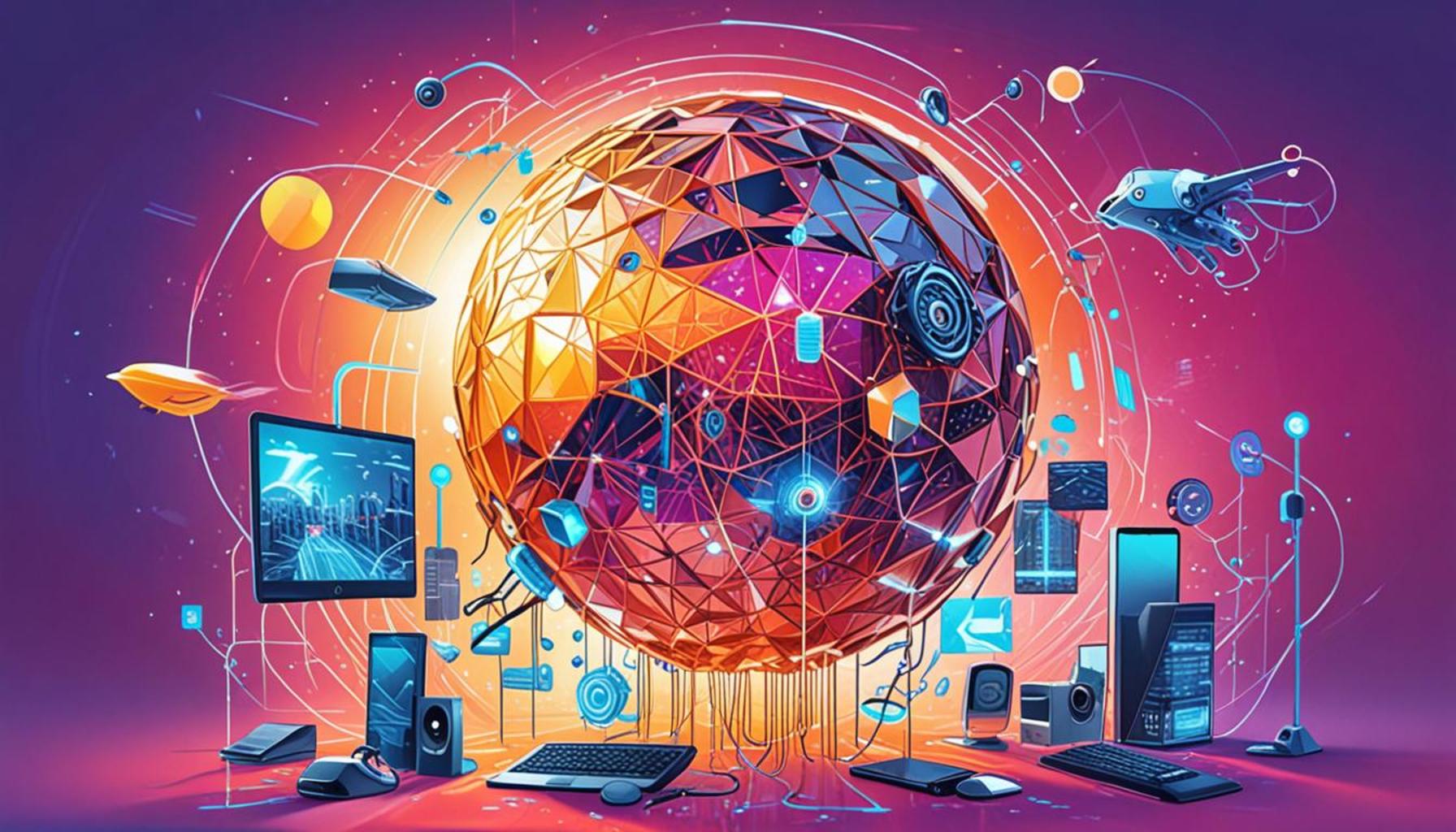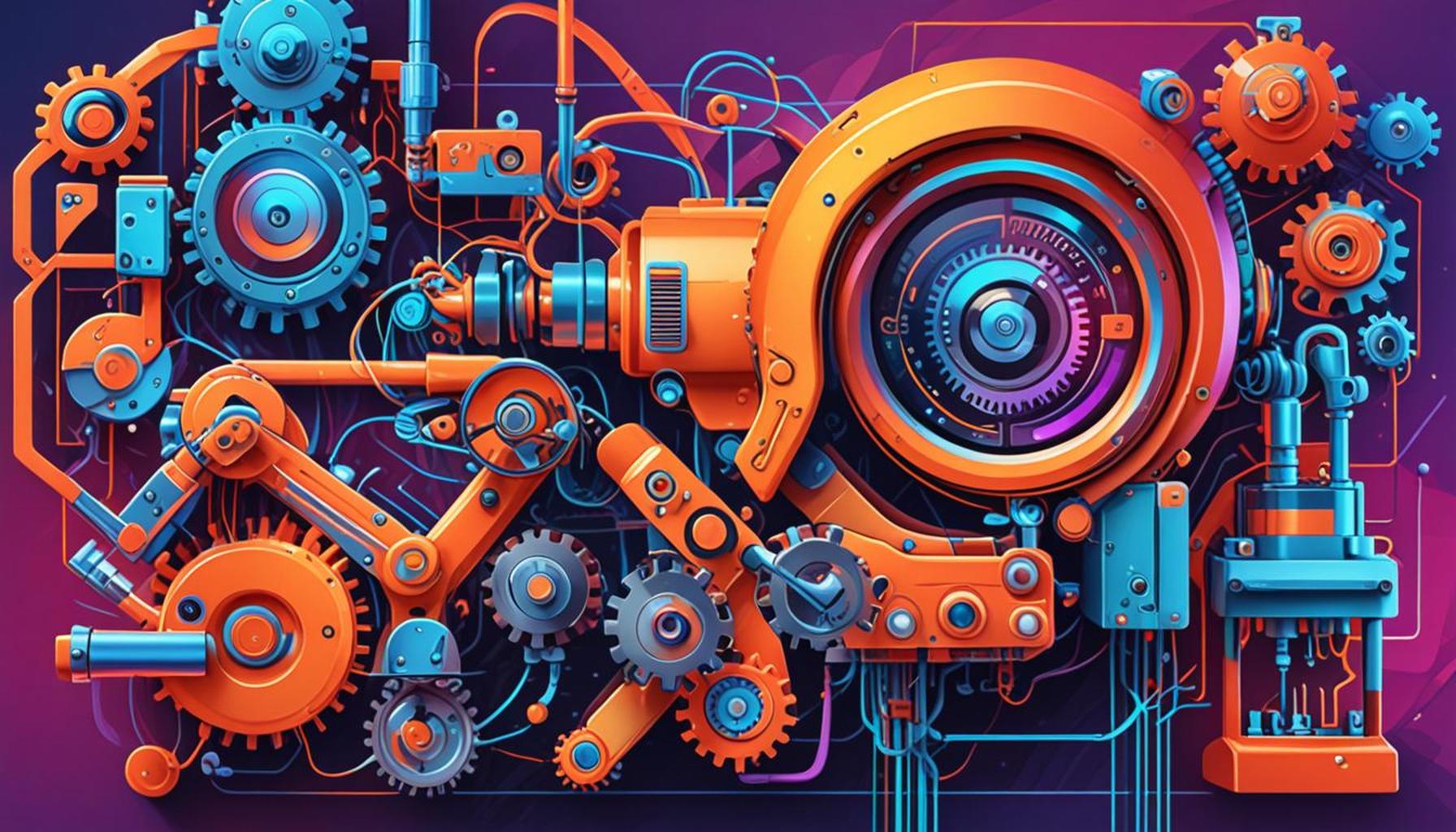The Role of Emerging Technologies in Accessing Government Benefits

The Evolution of Government Benefits Administration
As we continue to embrace the digital age, numerous sectors are witnessing transformative changes, and government benefits administration is no exception. Innovations such as artificial intelligence, blockchain, and mobile applications have emerged as pivotal tools, reshaping how citizens navigate various assistance programs. These technologies not only streamline processes but also enhance the overall experience through improved transparency and accountability.
Artificial Intelligence in Action
One of the most significant advancements in government benefits administration is the integration of artificial intelligence. AI systems can analyze vast amounts of data rapidly, allowing agencies to process applications much faster than traditional methods would allow. For example, the use of machine learning algorithms helps identify patterns indicative of fraudulent claims by analyzing applicants’ data against existing databases. This technology not only mitigates the risk of fraud but frees up resources for agencies to focus on genuine cases, ultimately enhancing the service provided to lawful applicants.
Blockchain for Data Security
Another groundbreaking technology is blockchain, which offers a decentralized and secure way to store information. For government agencies that manage sensitive data, such as social security numbers or financial information, blockchain can ensure data integrity by providing a tamper-proof digital ledger. This prevents unauthorized changes to records and enhances public trust in government processes. For instance, states experimenting with blockchain for managing unemployment claims have seen success in increasing confidence among citizens, knowing their data is secure and transparent.
Mobile Applications: Bridging the Accessibility Gap
The rise of mobile applications has significantly altered how constituents access government services. Many states now provide user-friendly apps that allow individuals to check eligibility, apply for benefits, and receive updates directly from their smartphones. This increase in accessibility is particularly beneficial for those in underserved communities who may face transportation challenges or have difficulty navigating bureaucratic systems. By putting vital resources in the palm of their hands, these applications empower citizens and enhance engagement with government services.
Navigating Challenges and Considerations
Despite the promising prospects of these technologies, several challenges remain. Issues surrounding accessibility and digital literacy persist, as not all citizens possess the necessary skills or resources to effectively engage with emerging technologies. Policymakers must advocate for equitable deployment of these tools, ensuring that the benefits of technological advancements extend to all segments of the population. Moreover, ongoing education about digital tools is crucial to ensuring that everyone can take advantage of these innovations.
In conclusion, as states in the U.S. explore the integration of innovative technologies into government benefits administration, the potential for improved efficiency and user engagement is immense. Nevertheless, it is essential to recognize and address the challenges that come with these transformations. Understanding the broader implications of AI, blockchain, and mobile applications in this context invites further discussion on how these advancements can redefine government assistance for the better.
LEARN MORE: This related article may interest you
Transforming the Customer Experience
Emerging technologies are not just optimizing internal processes within government agencies; they are fundamentally transforming the customer experience for individuals seeking government benefits. With the implementation of user-centric designs and automated systems, the barriers that have historically hindered access to assistance are being dismantled. Citizens no longer have to navigate convoluted bureaucratic procedures in person; instead, they can utilize digital tools that simplify the entire experience. The following innovations exemplify this trend:
- Chatbots and Virtual Assistants: Many government websites have begun to implement chatbots that can guide applicants through complex forms in real-time. These AI-driven tools are capable of answering frequently asked questions, providing instant support, and offering personalized assistance based on individual needs. For example, in Virginia, a chatbot is deployed to help residents understand Medicaid options and eligibility requirements.
- Data Analytics for Targeted Outreach: Leveraging data analytics, government agencies can identify citizens who may be eligible for benefits but are not currently enrolled. By analyzing demographic and socioeconomic data, governments can create targeted outreach campaigns to inform eligible individuals about available assistance, thereby improving enrollment rates.
- Online Portals: Comprehensive online portals have emerged as one-stop shops for accessing government services. These platforms typically allow users to apply for various benefits, check application statuses, and receive notifications about their cases without the need for in-person visits. For instance, the California Department of Social Services has developed a portal that enables users to submit applications for food assistance and other vital programs seamlessly.
Moreover, the integration of cloud computing allows for greater data sharing among agencies, streamlining processes across different levels of government. When different departments can collaborate using shared data, applicants face reduced wait times, fewer requirements for documentation, and an overall smoother experience. This interconnectedness is vital in crisis situations; during the COVID-19 pandemic, many states rapidly adapted their systems to efficiently distribute relief benefits, illustrating how crucial inter-agency cooperation is during times of need.
Empowering Citizens with Knowledge
Emerging technologies also play a pivotal role in empowering citizens with knowledge about available benefits. By disseminating information through digital platforms and social media, government agencies can reach a broader audience and ensure that the most vulnerable populations are informed about their options. Educational webinars, online tutorials, and social media campaigns can effectively demystify the benefits application process, making it more approachable and less intimidating. For example, states are using platforms like YouTube to create informative content that helps applicants understand what documentation they need and how to navigate the online systems.
As these technologies continue to evolve, it is essential to address the accompanying challenges. While many citizens embrace digital advancements, there are still individuals, particularly among older generations and low-income populations, who struggle to adapt to these rapid changes. Bridging the digital divide remains paramount, ensuring that no one is left behind in this new era of government service delivery.
| Category | Description |
|---|---|
| Data Analytics | The use of data analytics to streamline processes. |
| Enhanced User Experience | Accessibility and user-friendly interfaces improve public access. |
| Blockchain Technology | Ensures transparency and security in transactions involving government benefits. |
| Artificial Intelligence | AI chatbots assist users in real-time for better navigation. |
Emerging technologies are fundamentally transforming how citizens access government benefits. One significant advancement is the use of data analytics, which enables governments to streamline processes and identify trends in service usage. This optimization results in a faster and more efficient experience for individuals accessing benefits.Moreover, enhanced user experience is made possible through modern, accessible interfaces. With easy-to-navigate digital platforms, the barriers to accessing vital services are significantly lowered, making it easier for citizens to understand and obtain their benefits.Additionally, the integration of blockchain technology adds an element of security and transparency, creating trust between citizens and government agencies. Transactions are recorded in a manner that is immutable and visible to authorized stakeholders, minimizing fraud and ensuring accountability.Lastly, artificial intelligence, particularly in the form of chatbots, is revolutionizing the user experience by providing real-time assistance. This technology enables citizens to navigate the complex landscape of government benefits more effectively, allowing for quick resolutions to inquiries and better overall engagement with the available services.
LEARN MORE: This related article may interest you
Facilitating Greater Accessibility and Inclusion
As emerging technologies transform the landscape of government benefits, a significant focus is on enhancing accessibility and inclusion for all citizens. The integration of technology into government services ensures that a diverse array of individuals, including those with disabilities and individuals in remote areas, can access the assistance they need. The following innovations illustrate how technology is breaking down barriers:
- Mobile Applications: The increasing ubiquity of smartphones has enabled the development of mobile applications that facilitate easier access to government benefits. Many state agencies have launched apps that allow users to check their eligibility, apply for benefits, and receive updates directly on their devices. For instance, Maryland’s Maryland Benefits app consolidates various benefit programs, allowing residents to navigate their options effortlessly. This shift towards app-based access offers a level of convenience that traditional methods simply cannot match.
- Assistive Technologies: To better serve individuals with disabilities, government agencies are utilizing assistive technologies within their service platforms. Features such as screen readers, text-to-speech functionalities, and easy-read options ensure that information about benefits is accessible to everyone, regardless of their specific needs. The Social Security Administration’s website has incorporated features that cater to users with varying degrees of visual impairment, demonstrating a commitment to inclusivity in service delivery.
- Telehealth Services: The expansion of telehealth services in recent years has allowed citizens to access medical assessments required for benefits applications from the comfort of their homes. This is particularly beneficial for individuals in rural or underserved communities who previously faced challenges in attending in-person appointments. Programs like the Medicaid Health Home model utilize telehealth to connect individuals with essential healthcare services while facilitating smoother applications for benefits.
Additionally, enhancing cybersecurity has emerged as a critical concern as agencies increasingly rely on technology to manage sensitive personal data. With high-profile data breaches becoming commonplace, government entities are prioritizing the implementation of secure platforms to protect citizens’ information. Effective encryption methods and multifactor authentication processes are essential to ensuring that applicants feel safe and secure when accessing government benefits online.
The Role of Artificial Intelligence in Decision-Making
Artificial Intelligence (AI) is set to play a transformative role in the decision-making processes related to government benefits. AI algorithms can analyze vast amounts of data quickly and accurately, which not only assists agencies in assessing applications but also helps improve service delivery. For example, AI can detect patterns of potential fraud or identify discrepancies in applications that may require further review, thus streamlining operations. This capability not only expedites applications for legitimate users but also fortifies the integrity of the benefits system.
Moreover, AI tools can continuously learn and adapt, allowing government agencies to refine their outreach efforts and respond to the evolving needs of citizens. By employing machine learning, agencies can adjust their services based on trends in applications, ensuring that changes in society, such as economic downturns or health crises, can be met with timely and efficient responses.
As the role of emerging technologies in accessing government benefits grows, the potential for increased efficiency, security, and accessibility will continue to evolve. However, it remains vital for government entities to approach these advancements with a focus on ethical considerations, data privacy, and the ongoing commitment to provide equitable services for all citizens.
LEARN MORE: This related article may interest you
Conclusion: A New Era for Accessing Government Benefits
The integration of emerging technologies in accessing government benefits marks a significant progression towards a more efficient, inclusive, and user-friendly system. As highlighted throughout this article, innovations such as mobile applications, assistive technologies, and telehealth services have greatly enhanced the ability of citizens to navigate complex benefit systems. These advancements ensure that everyone, including marginalized groups and individuals in remote locations, can efficiently and effectively access the support they need.
Moreover, the incorporation of Artificial Intelligence not only streamlines application processes but also bolsters the integrity of government systems by detecting potential fraud and adapting to the needs of the populace. The emphasis on cybersecurity further underscores the importance of safeguarding personal information as technology plays an increasingly central role in our lives.
However, with this rapid technological evolution comes the responsibility for government entities to prioritize ethical considerations and maintain a commitment to data privacy. Balancing innovation with security and equity will be essential in fostering public trust and ensuring that these advancements genuinely serve all citizens. The future of accessing government benefits is hence not only about technology but also about creating systems that reflect our collective values and aspirations.
As the landscape evolves, it invites us all to explore and engage with these tools, ensuring that everyone can benefit from the support systems designed to aid them. A new era is dawning, and the potential for transformative change in public service delivery is within our grasp.



